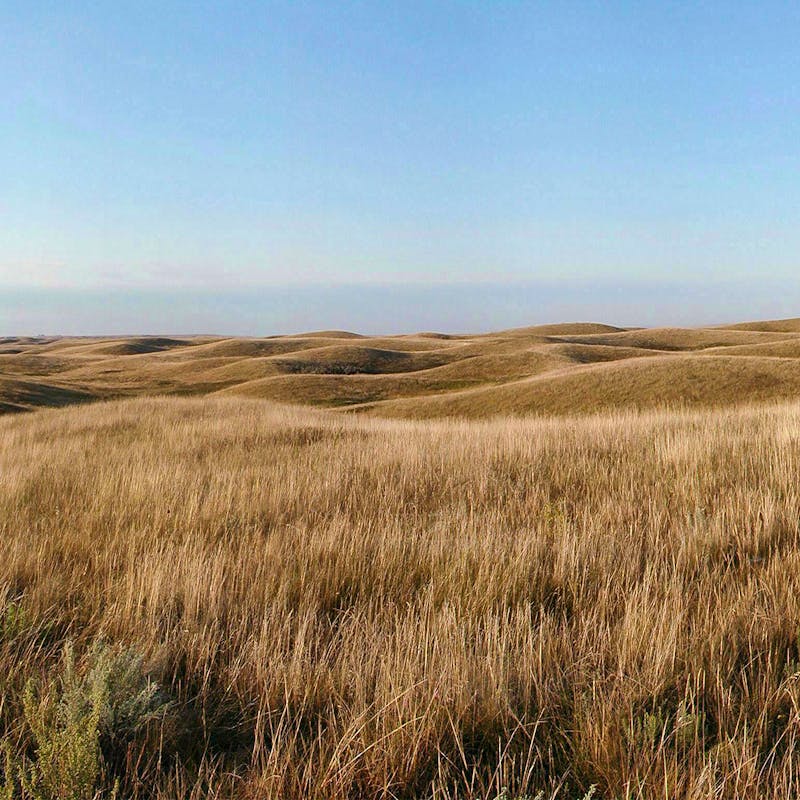A small, masked face pops up from a tiny crater-like mound on the darkening prairie. The animal begins to swivel around and scan its surroundings. In a flash, a narrow, 18- to 24-inch-long body springs out and the ferret bounds away.
Prior to the 1800s, there were tens of thousands of black-footed ferrets in the United States. But by the mid-1970s they vanished from the wild. In 1979, they were declared extinct.
Then, on September 26, 1981, hope for the species returned. A ranch dog named Shep caught a black-footed ferret in Meeteetse, Wyoming, leading to the discovery of a single remaining population.
Successful recovery is far from guaranteed, but we are at least on a good track to recover this endangered species. In honor of the rediscovery of North America’s only native ferret species over 40 years ago, let’s burrow into seven fun facts about black-footed ferrets and their all-important food, prairie dogs.
1. What do Black-Footed Ferrets Eat?
Black-footed ferrets are carnivorous, hunting their prey in the blanket of the night. Prairie dogs make up over 90% of their diet. These ferrets will also eat ground squirrels, rabbits and birds.
2. What is a Prairie Dog? Are Prairie Dogs Rodents?
Yes, prairie dogs are rodents. They are also a keystone species for the Great Plains, as native wildlife’s prey and their burrows and towns providing habitat for approximately 150 other species. In addition to black-footed ferrets, mountain plovers, burrowing owls, Ferruginous hawks and swift foxes also hunt prairie dogs.
Bonus: How Long do Prairie Dogs Live?
A wild prairie dog lifespan is three to five years.
3. What do Prairie Dogs Eat?
Prairie dog diet consists of grasses, sedges, forbs — plants with wider leaves than grasses and insect-pollinated flowers — roots and seeds. These rodents will also eat insects.
Bonus: Are Prairie Dogs Dangerous?
Like any wild animal, prairie dogs can be defensive when approached. They may see a human or domestic animal approaching them as a sign of aggression or danger. It’s always best to give wild animals their space and leave them wild!
4. Where do Prairie Dogs Live? What is Needed in a Prairie Dog and Black-Footed Ferret Habitat?
Prairie dog colonies were once found across the Great Plains from southern Canada to northern Mexico. They live on dry and flat grasslands with fine or medium soil, which is good for digging and building their underground burrows.
Black-footed ferrets utilize the habitat created by prairie dogs while also relying on the prairie dogs for their survival. They hunt, sleep and raise their young in prairie dog burrows.
5. Why are Black-Footed Ferrets Endangered?
Black-footed ferret once lived across the Great Plains from Canada to Mexico. As humans moved westward, they reshaped the lands inhabited by these ferrets. Prairie dogs were the target of widespread eradication efforts, which resulted in the loss of over 95% of their historic range coupled with the loss of grasslands due to plowing of the prairie, poisoning and the arrival of exotic diseases, including sylvatic plague in the 1900s.
With the loss of their primary food source and habitat engineer, black-footed ferrets were driven to the brink of extinction. While many of these threats persist today, the Endangered Species Act and hard-working conservationists have put ferrets on the road to recovery.
How Many Black-Footed Ferrets Are Left?
Eight of the ferrets discovered in 1981 bred successfully in captivity and their offspring continue to supplement wild ferret populations today. But more recovery work remains, especially when it comes to protecting prairie dog habitat needed for the long-term survival of ferrets. Today, only about 400 ferrets have survived in wild populations on 15 recovery sites in seven states. There are also roughly 250 black-footed ferrets in the captive breeding program administered by the U.S. Fish and Wildlife Service in partnership with zoos across the country.
6. How Do We Help Save Black-Footed Ferrets?
Defenders of Wildlife works together with governments, non-profits and private landowners to maintain and expand recovery sites for black-footed ferrets.
To save black-footed ferrets, we must protect and restore prairie dog colonies. We are working to restore and prevent the destruction of prairie dog colonies in Thunder Basin National Grassland in Wyoming and Conata Basin in South Dakota, which is the largest and most successful recovery site. We’re also helping ranchers in Kansas apply nonlethal tools such as vegetation barriers to keep prairie dogs away from neighboring ranching interests while a century-old state law has led to the lethal control, poisoning of prairie dogs.
You can help save black-footed ferrets by sharing their story with your friends and followers and, if able, supporting organizations like Defenders who are working hard to save and protect these incredible animals.













